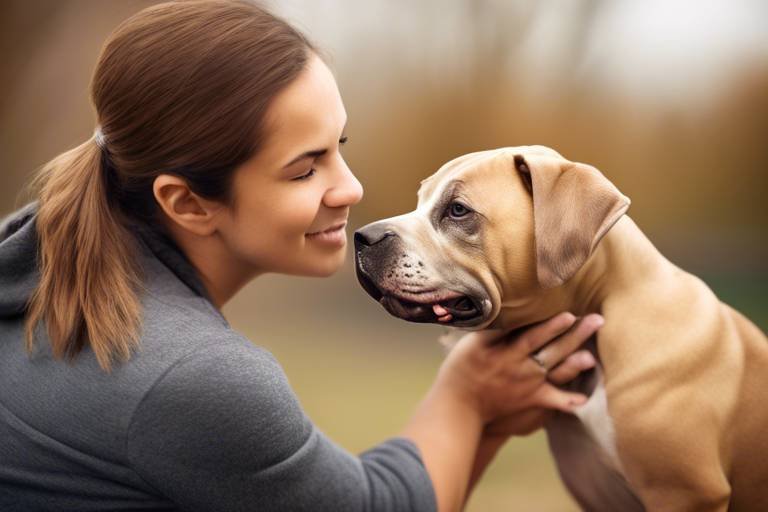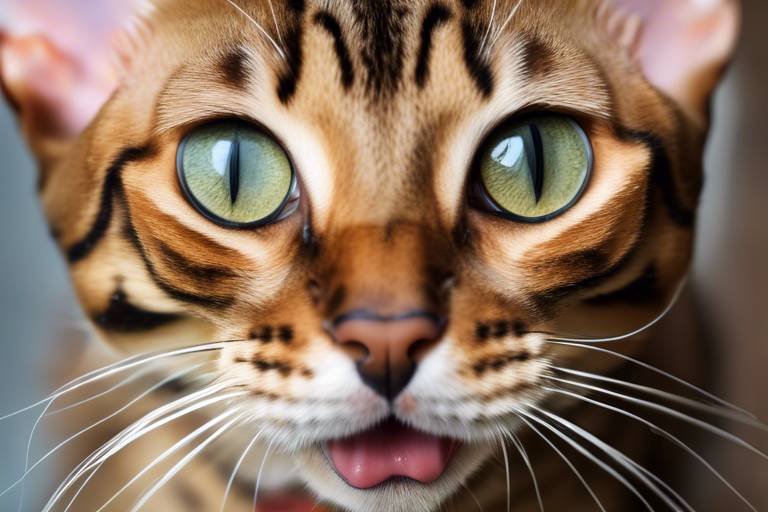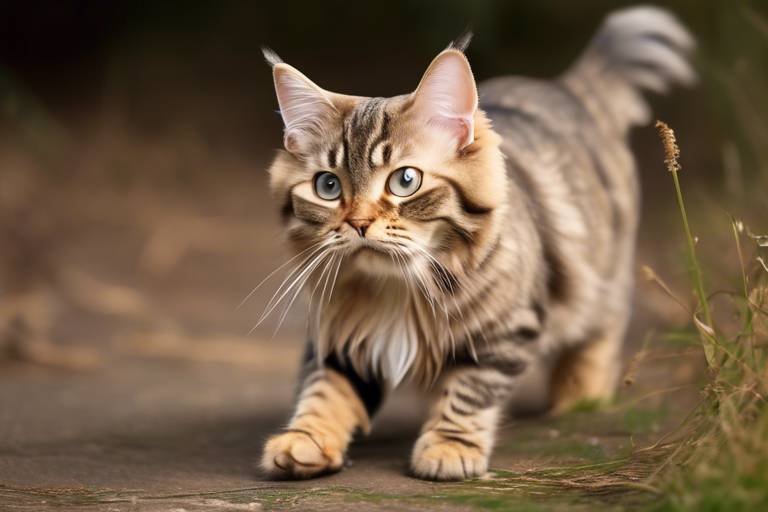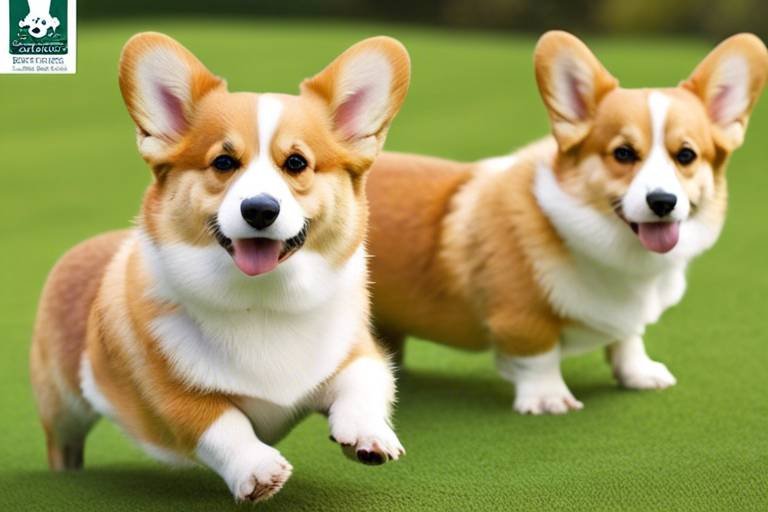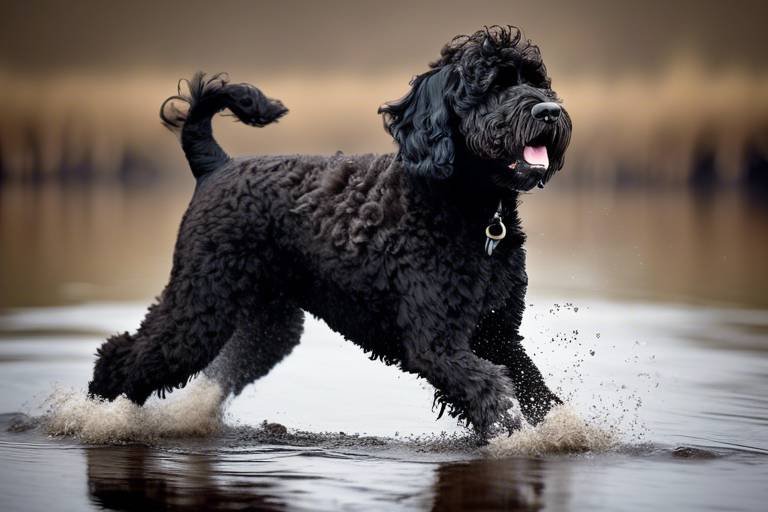Why the Keeshond Is a Great Family Dog
The Keeshond is not just a dog; it’s a family member that brings joy, laughter, and warmth into your home. If you’re on the hunt for a furry friend that embodies affection, intelligence, and a playful spirit, look no further than this charming breed. With their distinctive fox-like face and fluffy double coat, Keeshonds are not only visually appealing but also possess a personality that makes them incredibly suitable for family life. They thrive in various living situations, whether you live in a cozy apartment or a spacious house with a yard. Their adaptability is just one of the many reasons families adore them.
Imagine coming home after a long day, and there they are—tail wagging, eyes sparkling with excitement, ready to greet you with unconditional love. Keeshonds have a knack for making every family member feel special. They are known for their playful demeanor and loyalty, creating strong bonds with both adults and children. This breed is naturally social and enjoys being part of family activities, whether it’s a game of fetch in the backyard or snuggling on the couch during movie night. The Keeshond’s friendly nature makes them excellent companions, ensuring that every family member feels included and loved.
Another remarkable trait of the Keeshond is their intelligence. These dogs are quick learners, which makes training a breeze. They possess a strong desire to please their owners, making them highly trainable. Whether you're teaching them basic commands or advanced tricks, Keeshonds respond well to positive reinforcement techniques. This approach not only helps in building trust but also encourages good behavior, turning training sessions into enjoyable bonding experiences. With a little patience and consistency, families can cultivate a well-behaved and obedient companion.
However, like any breed, Keeshonds come with their own set of challenges. While they are generally easy to train, their stubborn streak can sometimes rear its head. Understanding their unique personality traits and employing consistent training methods can help families navigate these challenges effectively. Early socialization is also crucial for Keeshonds. Exposing them to different environments, people, and pets from a young age helps them develop into confident and adaptable family members. This proactive approach ensures they are comfortable in various situations, making family outings and gatherings more enjoyable.
In conclusion, the Keeshond is a fantastic choice for families looking for a loving, intelligent, and adaptable dog. Their friendly temperament, coupled with their eagerness to please, makes them great companions for both children and adults. If you’re ready to welcome a Keeshond into your home, prepare for a lifetime filled with tail wags, playful antics, and a bond that will surely enrich your family's life.
- Are Keeshonds good with children? Yes, Keeshonds are known for their gentle nature and are excellent companions for children.
- How much exercise do Keeshonds need? Keeshonds require regular exercise, including daily walks and playtime, to stay healthy and happy.
- Do Keeshonds shed a lot? Yes, Keeshonds have a thick double coat that sheds, particularly during seasonal changes, requiring regular grooming.
- How long do Keeshonds typically live? The average lifespan of a Keeshond is around 12 to 15 years.
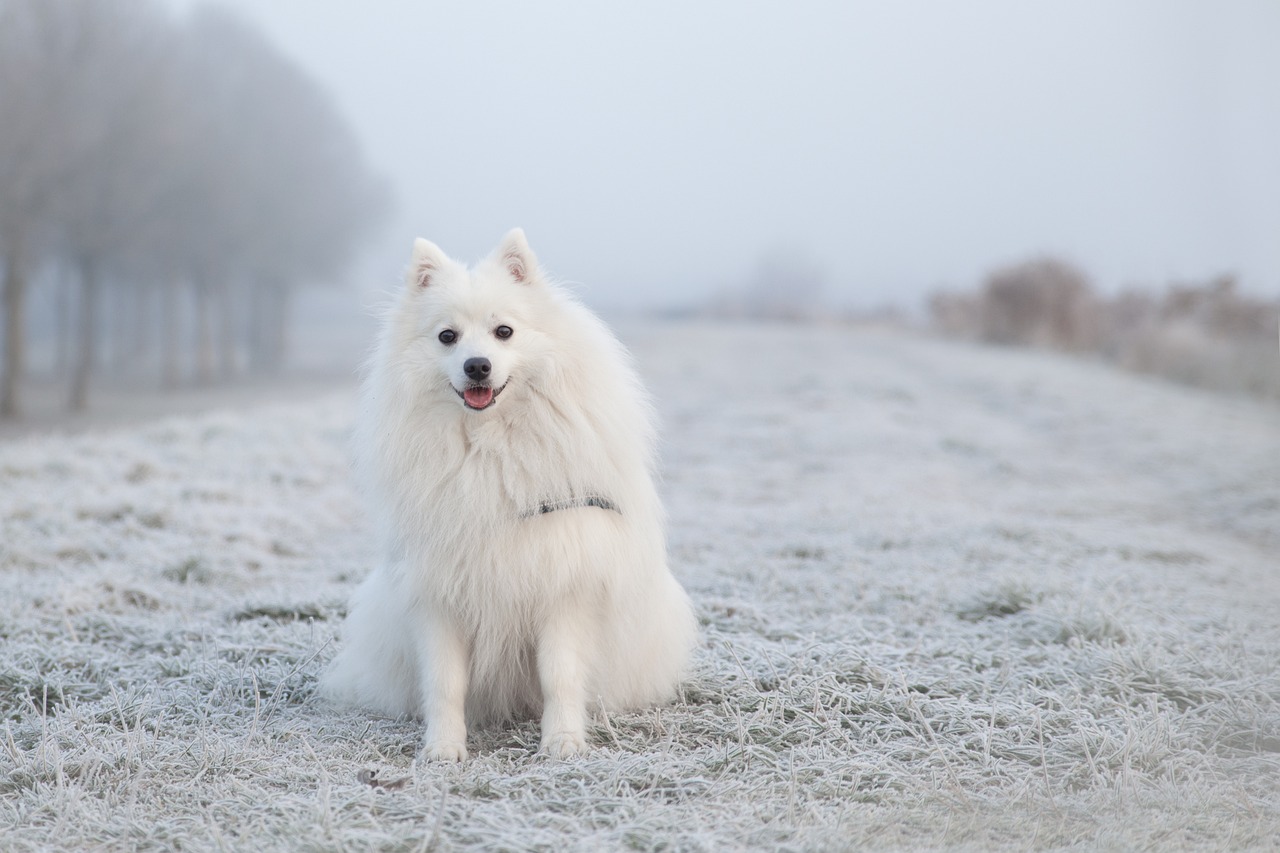
Temperament and Personality
Keeshonds are renowned for their friendly and affectionate nature, making them a perfect fit for families looking for a loyal companion. Imagine coming home after a long day, and there’s your Keeshond, tail wagging furiously, ready to greet you with a burst of energy and love. Their playful demeanor isn’t just for show; it’s a genuine expression of their desire to be part of your family. Keeshonds thrive on interaction and are known to form strong bonds with both adults and children alike.
This breed is often described as a “people dog”, which means they love being around their human companions. They have an innate ability to sense the mood of their family members, offering comfort when needed and playfulness when it’s time to have fun. Keeshonds are also quite intelligent, which enhances their personality. They can easily pick up on family routines and adapt to the dynamic of your household, making them incredibly versatile pets.
One of the standout traits of Keeshonds is their protective nature. While they are not aggressive, they are naturally alert and will bark to alert you of any unusual happenings. This makes them excellent watchdogs, ensuring that your family feels safe. However, their protective instincts come with a friendly twist; they are just as likely to greet guests with a wagging tail rather than a growl. This balance of watchfulness and affection makes them a unique presence in any home.
In terms of temperament, Keeshonds are generally playful and curious. They enjoy engaging in activities that stimulate their minds and bodies. Whether it’s a game of fetch in the backyard or a leisurely walk around the neighborhood, Keeshonds are always ready for some fun. Their sociable nature means they often get along well with other pets, provided they are properly socialized from an early age.
In summary, the Keeshond’s combination of affection, playfulness, and protectiveness makes them an exceptional choice for families. They not only bring joy and laughter into your home but also create a sense of security and companionship that is hard to match. If you’re looking for a dog that embodies loyalty and love, the Keeshond might just be your perfect match.

Intelligence and Trainability
The Keeshond is often celebrated for its remarkable intelligence, which plays a significant role in its trainability. These dogs possess a keen ability to learn commands quickly, making them a favorite among families looking for a pet that can easily adapt to their lifestyle. Their eagerness to please is like a double-edged sword; it not only makes training sessions enjoyable but also ensures that they are more willing to follow commands. Imagine having a furry friend that seems to understand you almost intuitively! This breed thrives on mental stimulation, so engaging them in training can be quite rewarding.
When it comes to training methods, using positive reinforcement techniques is essential. This means rewarding your Keeshond with treats, praise, or playtime when they perform a desired behavior. Not only does this build a trusting relationship between you and your dog, but it also motivates them to repeat those good behaviors. It's like teaching a child; when they receive encouragement, they're more likely to engage and learn. The joy in their eyes as they grasp a new trick is simply priceless!
Utilizing positive reinforcement methods is crucial when training a Keeshond. This approach helps build trust and encourages good behavior, making training sessions enjoyable for both the dog and the owner. For example, when your Keeshond sits on command, offer them a treat and shower them with affection. This not only reinforces the command but also makes the dog look forward to training sessions.
Another critical aspect of training is consistency. Establishing a routine and using clear commands will help reinforce learning and ensure that your Keeshond understands what is expected of them. Think of it as setting the ground rules in a game; if everyone knows the rules, the game is much more fun! For Keeshonds, consistency means using the same words for commands and practicing regularly. This repetition helps solidify their understanding and makes training a breeze.
Moreover, early socialization is crucial for Keeshonds to develop well-rounded personalities. Exposing them to various environments, people, and pets will help them become confident and adaptable family members. Imagine how much more relaxed and friendly your Keeshond will be when they're accustomed to different sights, sounds, and experiences! Taking them to parks, doggy daycare, or even on family outings can significantly enhance their social skills.
While Keeshonds are generally easy to train, they can exhibit stubbornness at times. Understanding their unique personality traits can help families navigate potential challenges effectively. For instance, if your Keeshond seems disinterested or resistant, it might be time to switch up your training methods or incorporate more play into the sessions. Remember, patience is key! Just like teaching a child, some concepts may take a little longer to grasp, but with love and persistence, success is just around the corner.
Positive Reinforcement Techniques
When it comes to training your Keeshond, positive reinforcement is the name of the game. This approach focuses on rewarding desirable behaviors rather than punishing unwanted ones, creating a more enjoyable experience for both you and your furry friend. Imagine teaching your Keeshond to sit or stay, and instead of scolding them for not getting it right away, you shower them with praise and treats when they do. This method not only builds trust but also strengthens the bond between you and your pet.
One of the most effective ways to implement positive reinforcement is through the use of treats. Every time your Keeshond successfully follows a command, reward them immediately with a small treat. This creates a direct association in their mind between the action and the reward. But remember, consistency is key! The more regularly you reward them for good behavior, the quicker they will learn.
Additionally, verbal praise is a powerful tool. Dogs thrive on attention and affection, so don't hold back on the compliments! Use an enthusiastic tone to let your Keeshond know they've done a great job. You might say phrases like, "Good boy!" or "Well done!" to reinforce their positive actions. Over time, your Keeshond will start to associate these words with their accomplishments, making them eager to please you.
Another technique involves incorporating playtime as a reward. For example, if your Keeshond successfully performs a trick, engage them in their favorite game or toss a toy for them to fetch. This not only rewards them for their good behavior but also keeps training sessions fun and exciting. Remember, training should never feel like a chore for either of you. By making it enjoyable, you'll keep your Keeshond engaged and motivated.
Lastly, it’s essential to be patient. Every dog learns at their own pace, and Keeshonds, while intelligent, can sometimes be a bit stubborn. If your Keeshond isn’t catching on as quickly as you’d hoped, don’t get discouraged. Instead, consider breaking down the commands into smaller steps or revisiting the basics. With a little persistence and a lot of love, your Keeshond will thrive in their training.
In conclusion, utilizing positive reinforcement techniques not only enhances your Keeshond’s training experience but also fosters a loving and trusting relationship. By rewarding good behavior with treats, praise, and play, you’ll create a happy and well-adjusted family member who’s eager to learn and grow alongside you.
- How long does it take to train a Keeshond? Training times can vary, but with consistent practice, you can expect to see progress within a few weeks.
- Are Keeshonds good with other pets? Yes, Keeshonds are generally friendly and social, making them great companions for other pets when properly socialized.
- What is the best age to start training a Keeshond? It’s best to start training as early as possible, ideally when they are puppies, but older dogs can learn too with the right techniques.
Consistency in Training
When it comes to training your Keeshond, consistency is the name of the game. Just like a well-tuned orchestra, each member must play their part at the right time for the entire symphony to sound harmonious. In the same vein, establishing a routine and sticking to it helps your Keeshond understand what is expected of them. Imagine trying to learn a new dance without knowing the steps; it would be confusing, right? That’s how your dog feels when training lacks consistency.
Using the same commands and cues every time you train is crucial. If one day you say “sit” and the next day you say “down” for the same action, your Keeshond will likely be left scratching its head, wondering what you really mean. So, clear communication is key. Utilize the same words and gestures consistently, and you'll see your Keeshond picking up commands like a pro.
Moreover, timing is everything. If you reward your dog immediately after they perform the desired behavior, they will begin to associate that action with the reward. This positive reinforcement method not only encourages good behavior but also builds trust between you and your furry friend. It’s like giving a high-five after a job well done. They feel appreciated, and you both enjoy the moment!
But remember, consistency isn’t just about commands and rewards; it’s also about the environment. If you train in different places, ensure that the rules remain the same. For example, if your Keeshond is not allowed on the furniture during training sessions, that rule should apply at home too. This helps reinforce their understanding of boundaries.
Lastly, patience is a virtue in the world of dog training. Just like humans, Keeshonds have their off days. If your dog isn’t responding as expected, don’t throw in the towel. Instead, take a step back, reassess your methods, and keep practicing. Over time, with your consistent efforts and positive attitude, your Keeshond will flourish into a well-mannered family member.
- How long should training sessions be? Training sessions should ideally last between 5 to 10 minutes, as Keeshonds can lose focus if sessions are too long.
- What are the best rewards for training? Treats, praise, and playtime are excellent rewards that can motivate your Keeshond during training.
- Is socialization important for Keeshonds? Absolutely! Early socialization helps Keeshonds develop into well-rounded dogs who are comfortable in various environments.
- Can Keeshonds be trained for specific tasks? Yes, Keeshonds are intelligent and can be trained for various tasks, including agility, obedience, and even therapy work.
Socialization Opportunities
Socialization is a cornerstone in raising a well-rounded Keeshond. These dogs thrive on interaction and exposure to various environments, people, and other pets. Starting early is crucial; ideally, you should begin socializing your Keeshond when they are still a puppy. This phase is often referred to as the "sensitive period," where they are most receptive to new experiences. Think of it like a sponge soaking up water—puppies are eager to absorb everything around them!
Taking your Keeshond on outings to parks, pet-friendly stores, or even doggy daycare can significantly enhance their social skills. The more diverse experiences they have, the more confident they will become. You can introduce them to different sounds, sights, and smells, which will help them adapt to various situations later in life. For instance, exposing them to children, elderly folks, and other animals can prepare them for family life and social gatherings.
Here are some effective socialization opportunities to consider:
- Playdates: Arrange playdates with other dogs to help your Keeshond learn appropriate play behavior and develop friendships.
- Group Training Classes: Enroll your Keeshond in training classes that include other dogs and people. This helps them learn commands while interacting with others.
- Public Outings: Take your dog to busy areas like farmers' markets or festivals. This exposure to crowds can help them become more adaptable.
Remember, the goal is to create positive experiences. If your Keeshond has a bad encounter, it could lead to fear or anxiety in similar situations later on. Always monitor their interactions and be ready to intervene if necessary. By fostering a positive socialization environment, you’re not just raising a dog; you’re nurturing a lifelong companion who is confident, friendly, and well-adjusted.
Q: How early should I start socializing my Keeshond?
A: It’s best to start socializing your Keeshond as early as 8 weeks old. This is the ideal time to introduce them to new experiences.
Q: What are some signs that my Keeshond is well-socialized?
A: A well-socialized Keeshond will approach new people and pets with curiosity rather than fear. They should be comfortable in various environments and respond positively to different stimuli.
Q: Can I over-socialize my Keeshond?
A: While it’s important to expose your Keeshond to new experiences, be cautious not to overwhelm them. Monitor their reactions and take breaks if they seem stressed.
Common Training Challenges
While Keeshonds are often celebrated for their friendly disposition and eagerness to learn, they can sometimes present a few training challenges that families should be aware of. One of the most common issues is their occasional stubbornness. Just like a child who decides to test boundaries, Keeshonds may choose to ignore commands if they feel like it. This can be particularly evident during training sessions when they might not be in the mood to cooperate. However, understanding their personality traits can significantly help in addressing these challenges.
Another challenge that can arise is their tendency to become easily distracted. With their curious nature and keen senses, Keeshonds may find themselves captivated by the sights and sounds around them, making it difficult for them to focus on the task at hand. To combat this, it’s essential to create a distraction-free environment during training sessions. This means choosing a quiet space where they can concentrate without the temptation of wandering off to chase a butterfly or greet a passing neighbor.
In addition to these challenges, Keeshonds can also be quite vocal. Their natural instinct to bark can be a double-edged sword; while it makes them excellent watchdogs, it can also lead to issues if not properly managed. Training them to understand when barking is appropriate and when it isn’t is crucial for maintaining a peaceful household. Incorporating consistent commands and rewards for quiet behavior can help curb excessive barking.
To summarize some of the common training challenges faced with Keeshonds, consider the following:
- Stubbornness: They may choose to ignore commands at times.
- Distractions: Their curious nature can lead to difficulty focusing.
- Vocal tendencies: They may bark excessively if not trained properly.
By being aware of these challenges and implementing strategies to overcome them, families can foster a more harmonious relationship with their Keeshond. Remember, patience and consistency are key! With the right approach, training can be a rewarding experience for both the dog and the family.
1. Are Keeshonds easy to train?
Yes, Keeshonds are generally easy to train due to their intelligence and eagerness to please. However, they may exhibit stubbornness at times, so patience is essential.
2. How can I manage my Keeshond's barking?
Training your Keeshond to understand when barking is appropriate can help. Use consistent commands and rewards for quiet behavior to curb excessive barking.
3. What is the best way to socialize my Keeshond?
Early socialization is crucial. Expose your Keeshond to various environments, people, and pets to help them develop a well-rounded personality.
4. How often should I groom my Keeshond?
Keeshonds have a thick double coat that requires regular grooming. Aim for at least once a week to prevent matting and keep their coat healthy.
5. How much exercise does a Keeshond need?
Keeshonds require regular exercise to maintain a healthy weight and prevent behavioral issues. Aim for daily walks and playtime to keep them happy and active.
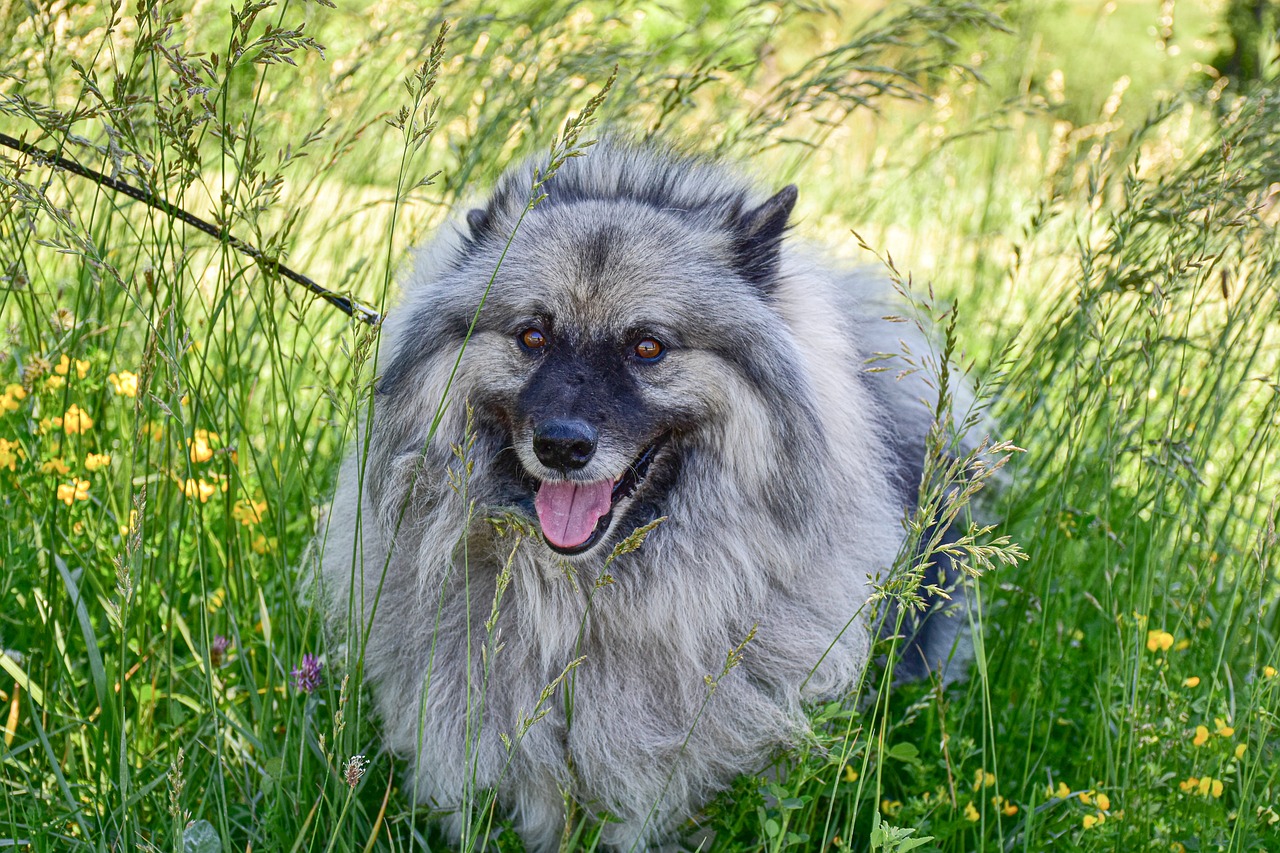
Compatibility with Children
Keeshonds are renowned for their gentle nature, making them excellent companions for children. These fluffy bundles of joy are not just dogs; they are family members who thrive on love and interaction. Their playful attitude encourages positive interactions, fostering a loving environment for family bonding. Imagine a scenario where your child comes home from school, and there's a Keeshond waiting at the door, tail wagging with excitement—this is the kind of heartwarming connection that can enrich family life.
One of the most appealing traits of Keeshonds is their patience. They seem to understand the exuberance of children, often tolerating the occasional tug of the ear or a gentle hug. This makes them ideal for families with young kids who are still learning how to interact with pets. However, it’s crucial to remember that supervised playtime is essential to ensure safe interactions between Keeshonds and young children. This practice not only helps prevent accidents but also teaches kids how to interact respectfully with pets. By guiding children on how to approach and play with their furry friends, parents can foster a nurturing environment that promotes empathy and understanding.
Involving children in the care of a Keeshond can also teach them a sense of responsibility and empathy. Assigning age-appropriate tasks, such as feeding the dog or helping with grooming, fosters a sense of ownership and strengthens the bond between kids and their furry friend. When children see that their actions directly affect the well-being of their pet, they learn valuable life lessons about care and compassion. This responsibility can be a rewarding experience that deepens their connection with the Keeshond, creating memories that last a lifetime.
To ensure that the Keeshond and children coexist harmoniously, it’s essential to establish some ground rules. For instance, teaching children to respect the dog's space and to recognize when the Keeshond needs a break can prevent misunderstandings. Additionally, parents can create a list of do's and don’ts to guide their kids in interacting with the dog. Here’s a quick example:
| Do's | Don'ts |
|---|---|
| Pet gently and calmly. | Pull on the dog's fur or tail. |
| Invite the Keeshond to play with toys. | Disturb the dog while it’s eating or sleeping. |
| Take the dog for walks with supervision. | Leave the dog unattended with small children. |
In conclusion, Keeshonds are not just pets; they are loving companions that can enhance the family experience. Their compatibility with children, combined with proper training and supervision, makes them a fantastic choice for families looking to add a furry friend to their home. The joy of watching a child grow alongside a Keeshond is a beautiful journey filled with laughter, learning, and unconditional love.
- Are Keeshonds good with toddlers? Yes, Keeshonds are known for their gentle demeanor, making them great companions for toddlers when supervised.
- How much exercise do Keeshonds need? Keeshonds require daily exercise, including walks and playtime, to stay happy and healthy.
- Can Keeshonds be left alone with children? It's best to supervise interactions between Keeshonds and young children to ensure safety and proper behavior.
- Do Keeshonds shed a lot? Yes, Keeshonds have a thick double coat that sheds, requiring regular grooming to keep their coat healthy.
Supervised Playtime
When it comes to creating a harmonious household with a Keeshond, is not just a good idea; it's absolutely essential! Imagine your Keeshond as a playful, fluffy bundle of joy, eager to engage with the little ones in your family. However, just like any other dog, they need guidance to ensure that their interactions are safe and positive. Supervision during playtime allows you to monitor their behavior and intervene if necessary, preventing any potential mishaps.
During these play sessions, it's important to establish a few ground rules to ensure that everyone, including your Keeshond, has a great time. Here are some tips to consider:
- Set Boundaries: Teach your children the importance of respecting the dog's space. For instance, if the Keeshond is resting or eating, it's best to let them be.
- Use Appropriate Toys: Always provide toys that are safe for both your children and your Keeshond. Avoid small items that could be swallowed and opt for sturdy, chew-resistant toys.
- Teach Gentle Play: Encourage your kids to play gently with the Keeshond. Tug-of-war can be fun, but it should be played in moderation to prevent any aggressive behavior.
Additionally, supervised playtime serves as an excellent opportunity to teach your children how to interact with pets. They can learn to recognize the Keeshond's body language, understanding when the dog is excited, playful, or perhaps a bit overwhelmed. This not only fosters a bond between the dog and your kids but also instills a sense of responsibility and empathy in the children. It’s like watching a beautiful dance unfold, where both parties learn to move in harmony with each other.
In essence, supervised playtime with a Keeshond isn’t just about keeping an eye on things; it’s about building a loving relationship that can last a lifetime. By being actively involved, you can ensure that your children learn the right way to treat animals while giving your Keeshond the love and attention it craves. So, grab those toys, get ready for some laughter, and let the fun begin!
Here are some common questions families have about Keeshonds and supervised playtime:
- How long should supervised playtime last? Aim for about 30 minutes to an hour, depending on the energy levels of both your Keeshond and your children.
- What signs indicate my Keeshond needs a break? Watch for signs such as panting, retreating to a quiet space, or a lack of interest in play. These are cues that your dog may need some downtime.
- Can I leave my Keeshond alone with my kids? It's best to never leave young children unsupervised with pets, even if your Keeshond is gentle. Always keep an eye on their interactions.
Teaching Kids Responsibility
Involving children in the care of a Keeshond can be a transformative experience, not just for the dog but for the kids as well. When children participate in the daily routines of pet care, they learn valuable lessons about responsibility, empathy, and commitment. Imagine your child waking up in the morning, excited to feed their furry friend and take them for a walk. This simple act can instill a sense of duty and pride that lasts a lifetime.
Assigning age-appropriate tasks is crucial in this process. Younger children can help with basic responsibilities, such as:
- Filling the water bowl
- Brushing the Keeshond's coat
- Playing fetch in the backyard
As children grow older, they can take on more significant roles, like:
- Taking the dog for walks
- Learning how to properly groom their pet
- Understanding the importance of vet visits and vaccinations
This gradual increase in responsibility not only helps kids develop a routine but also fosters a deeper connection with their Keeshond. They learn that pets require consistent care and attention, much like how they need to look after their own belongings and chores around the house. It’s a beautiful cycle of learning—children grow more responsible, and in return, they gain the trust and affection of their furry companions.
Moreover, this shared responsibility can strengthen family bonds. When everyone pitches in to care for the Keeshond, it creates a sense of teamwork and unity. Family members can share stories about their experiences, celebrate milestones like the dog's birthday, or even create a chore chart to keep track of responsibilities. This not only teaches kids about accountability but also emphasizes the importance of working together as a family unit.
In conclusion, teaching kids responsibility through pet care is a win-win situation. They gain essential life skills, while the Keeshond enjoys the love and attention it deserves. So, why not start today? Involve your children in caring for your Keeshond, and watch them flourish into responsible and empathetic individuals!
1. How can I get my child involved in caring for our Keeshond?
Start by assigning simple tasks that are age-appropriate. For younger kids, this could mean filling the water bowl or brushing the dog. As they grow older, you can introduce more responsibilities like walking the dog or helping with grooming.
2. What are some good ways to teach my child about pet care?
You can teach your child about pet care through hands-on experience. Show them how to feed the dog, where to take it for walks, and how to recognize when the pet needs something. Make it a fun learning experience!
3. How can I ensure my child interacts safely with our Keeshond?
Always supervise interactions between young children and pets. Teach your child to approach the dog calmly and to respect its space. This helps prevent accidents and teaches kids how to interact with animals respectfully.
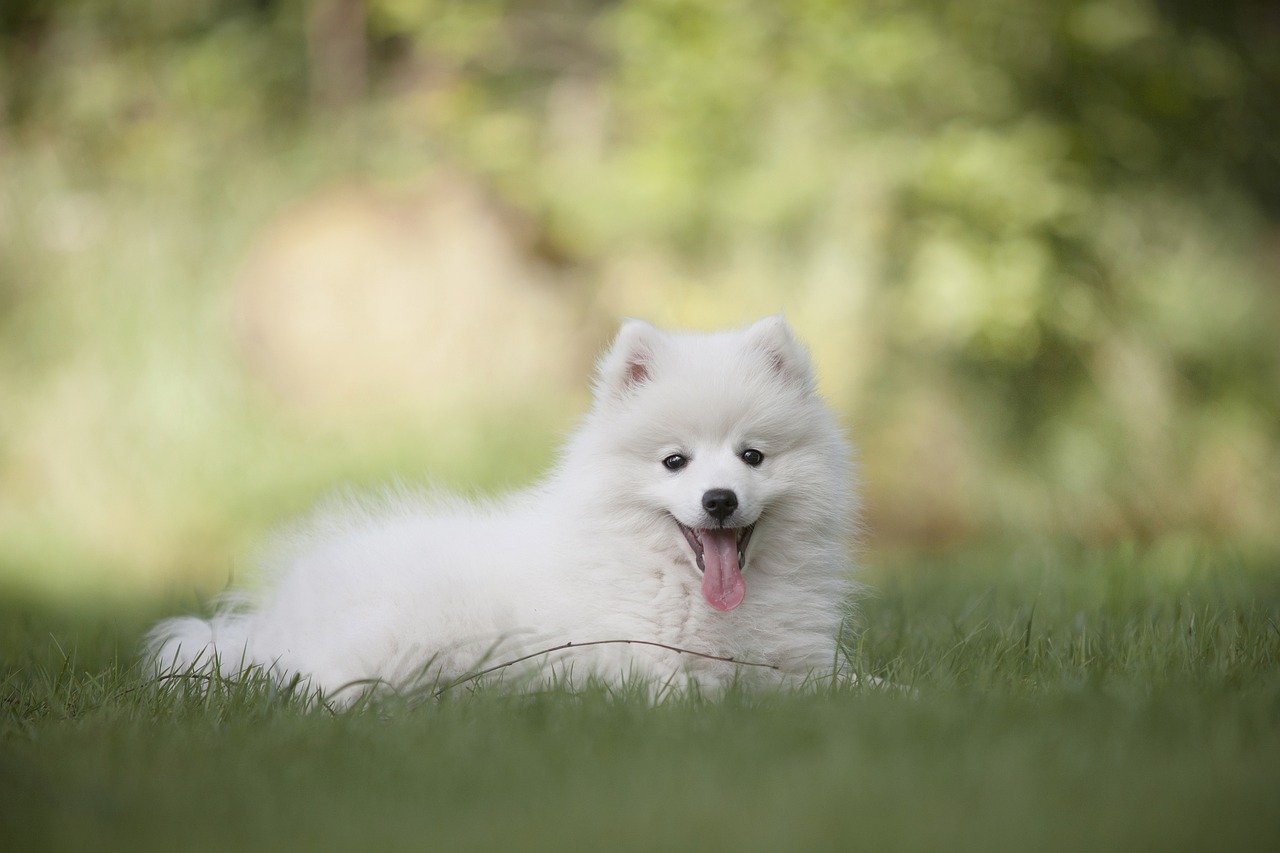
Health and Care Considerations
When it comes to ensuring your Keeshond remains a happy and healthy member of the family, regular health check-ups and proper care are absolutely vital. These fluffy companions, with their outgoing personalities, require attention to their specific health needs to thrive. Just like any family member, they rely on us to provide the necessary care that keeps them in tip-top shape. A proactive approach to their health will not only enhance their quality of life but also strengthen the bond you share.
One of the essential aspects of Keeshond care is understanding their grooming needs. With their thick double coat, these dogs require regular grooming to prevent matting and to keep their fur looking its best. It's not just about aesthetics; proper grooming contributes significantly to their overall health. A well-groomed Keeshond is less likely to experience skin issues and discomfort. Plan to brush your Keeshond at least once a week, and more often during shedding seasons. Additionally, consider scheduling professional grooming sessions every few months to maintain that luxurious coat.
Another critical aspect of Keeshond care is their exercise requirements. These energetic dogs thrive on activity, and without regular exercise, they can become bored and develop behavioral issues. Engaging your Keeshond in daily walks, playtime, and mental stimulation activities is essential. Aim for at least 30 to 60 minutes of exercise each day. This not only keeps them physically fit but also helps to channel their energy positively. Think of it as a win-win; you get to enjoy quality time with your furry friend while keeping them healthy!
Moreover, being aware of common health issues that Keeshonds may face is crucial. Regular vet visits can catch potential problems early. Some health concerns to watch for include:
- Hip Dysplasia: A genetic condition that can affect their mobility.
- Eye Problems: Such as cataracts or progressive retinal atrophy.
- Skin Conditions: Due to their thick coat, they can be prone to skin irritations.
By staying informed about these issues and maintaining a routine of health check-ups, you can help ensure your Keeshond lives a long, healthy life filled with love and joy. Remember, a healthy dog is a happy dog!
1. How often should I take my Keeshond to the vet?
It’s recommended to take your Keeshond for a check-up at least once a year. However, if you notice any unusual behavior or health concerns, don’t hesitate to consult your vet sooner.
2. What type of food is best for a Keeshond?
High-quality dog food that meets their nutritional needs is ideal. Look for options that list meat as the primary ingredient and avoid fillers like corn and soy.
3. How much exercise does a Keeshond need?
Keeshonds typically need at least 30 to 60 minutes of exercise daily. Activities can include walks, playtime, and even training exercises to keep their minds engaged.
4. Are Keeshonds good with other pets?
Yes, Keeshonds are generally friendly and social, making them good companions for other pets, especially if they are properly socialized from a young age.
5. How can I help my Keeshond maintain a healthy coat?
Regular brushing, professional grooming, and a balanced diet rich in omega fatty acids will help keep their coat healthy and shiny.
Grooming Needs
When it comes to the of a Keeshond, there are a few important factors to consider to keep your furry friend looking their best. These dogs boast a stunning thick double coat that not only gives them their distinctive appearance but also requires regular maintenance. Neglecting their grooming can lead to matting and an unhealthy coat, so it's essential to establish a grooming routine right from the start.
The Keeshond's coat consists of a soft, dense undercoat and a longer, harsher outer coat. This unique combination helps them adapt to various weather conditions, but it also means that they shed quite a bit, particularly during seasonal changes. To manage this, you’ll want to brush your Keeshond at least two to three times a week. This not only helps to remove loose hair but also prevents the dreaded matting that can occur if the undercoat is not properly cared for.
During shedding seasons, which typically occur in spring and fall, you may find it beneficial to increase the frequency of brushing to every day. This will help keep your home clean and reduce the amount of fur that ends up on your clothes and furniture. Additionally, regular grooming sessions can also serve as a bonding experience between you and your Keeshond, allowing you to check for any skin issues or parasites while you’re at it.
In terms of specific grooming tools, a slicker brush and an undercoat rake are excellent choices for managing a Keeshond's coat. The slicker brush can help detangle any knots, while the undercoat rake effectively removes loose fur from the undercoat. If you’re unsure about the right tools, your veterinarian or a professional groomer can provide recommendations tailored to your dog’s specific needs.
Aside from brushing, regular bathing is also an important aspect of grooming. A bath every two to three months is usually sufficient, but if your Keeshond gets particularly dirty or smelly, feel free to give them a bath sooner. Use a gentle dog shampoo to avoid irritating their skin. After bathing, make sure to thoroughly dry their coat, as moisture can lead to skin issues.
Don’t forget about their nails! Regular nail trimming is essential to prevent discomfort and ensure your Keeshond can walk comfortably. Ideally, you should trim their nails every three to four weeks. If you’re unsure how to do this safely, again, consulting a professional groomer can be a great option.
Overall, maintaining a consistent grooming routine for your Keeshond will not only keep them looking fabulous but also contribute significantly to their overall health and happiness. Remember, a well-groomed dog is a happy dog!
- How often should I groom my Keeshond? - It's best to brush them two to three times a week, and daily during shedding seasons.
- What tools do I need for grooming? - A slicker brush and an undercoat rake are highly recommended.
- How often should I bathe my Keeshond? - Every two to three months is typically sufficient, but adjust as needed based on their activity level.
- How can I tell if my Keeshond needs a bath? - If they start to smell or look dirty, it’s time for a bath!
- When should I trim my Keeshond's nails? - Aim to trim their nails every three to four weeks.
Exercise Requirements
When it comes to keeping your Keeshond happy and healthy, regular exercise is not just a suggestion; it’s a necessity! These lively dogs are bursting with energy and need an outlet for it. Think of a Keeshond as a little bundle of joy that requires daily activity to keep its spirit high and its mind sharp. Without sufficient exercise, you might find your Keeshond getting a bit restless or, worse, developing some unwanted behaviors due to pent-up energy.
So, how much exercise does a Keeshond really need? Generally, a daily routine of at least 30 to 60 minutes of physical activity is ideal. This can include walks, playtime in the yard, or even engaging in dog sports. The key is to mix it up to keep things interesting! Here are some fun ways to ensure your Keeshond gets the exercise it craves:
- Daily Walks: Aim for at least two walks a day. Not only does this provide physical exercise, but it also offers mental stimulation as your dog explores the world.
- Playtime: Engage in interactive games like fetch or tug-of-war. These games not only burn energy but also strengthen the bond between you and your furry friend.
- Dog Parks: Visiting a dog park can be a great way for your Keeshond to socialize and run freely. Just be sure to supervise interactions with other dogs.
- Agility Training: If you're feeling adventurous, consider agility training. This provides both physical and mental challenges, and Keeshonds generally excel at it!
Moreover, Keeshonds thrive on social interaction, so incorporating family members into playtime can make it even more enjoyable. Whether it’s chasing a ball or just running around the backyard, the more, the merrier! Keep in mind that Keeshonds are also known for their intelligence, so a little mental exercise—like puzzle toys—can complement their physical activity wonderfully.
In summary, ensuring your Keeshond gets enough exercise is crucial for its overall well-being. A well-exercised Keeshond is a happy Keeshond, which means a happy family. So, lace up your shoes, grab that leash, and get ready for some fun outdoor adventures!
- How much exercise does a Keeshond need daily? A Keeshond typically requires 30 to 60 minutes of exercise each day.
- Can Keeshonds live in apartments? Yes, Keeshonds can adapt to apartment living as long as they receive regular exercise and mental stimulation.
- What activities do Keeshonds enjoy? Keeshonds enjoy walks, playtime, dog sports, and socializing with other dogs.
- Are Keeshonds good with children? Absolutely! Keeshonds are known for their gentle and playful nature, making them great companions for kids.
Frequently Asked Questions
- What is the temperament of a Keeshond?
Keeshonds are known for their friendly and affectionate nature. They are playful, loyal, and form strong bonds with both adults and children, making them great companions for families.
- How intelligent are Keeshonds?
Keeshonds are highly intelligent dogs, which makes them relatively easy to train. Their eagerness to please means they can quickly learn commands and adapt to family routines.
- What training techniques work best for Keeshonds?
Utilizing positive reinforcement techniques is essential when training a Keeshond. This method builds trust and encourages good behavior, ensuring training sessions are enjoyable for both the dog and the owner.
- Are Keeshonds good with children?
Yes, Keeshonds are known for their gentle nature, making them excellent companions for children. Their playful attitude promotes positive interactions, fostering a loving environment for family bonding.
- How can I teach my kids to care for a Keeshond?
Involving children in the care of a Keeshond can teach them responsibility and empathy. Assigning age-appropriate tasks fosters a sense of ownership and strengthens the bond between kids and their furry friend.
- What are the grooming needs of a Keeshond?
Keeshonds have a thick double coat that requires regular grooming to prevent matting and maintain a healthy appearance. Understanding their grooming needs is essential for their overall well-being.
- How much exercise do Keeshonds need?
Regular exercise is crucial for Keeshonds to maintain a healthy weight and prevent behavioral issues. Engaging in daily walks and playtime keeps them active and happy family members.
- What are common training challenges with Keeshonds?
While Keeshonds are generally easy to train, they can be a bit stubborn at times. Understanding their unique personality traits can help families navigate potential challenges effectively.
- Why is early socialization important for Keeshonds?
Early socialization is crucial for Keeshonds to develop well-rounded personalities. Exposing them to various environments, people, and pets helps them become confident and adaptable family members.





